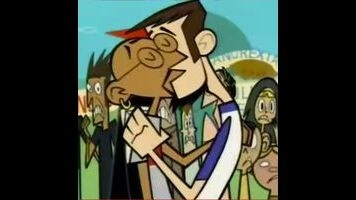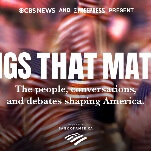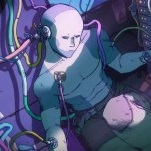Clone High: “A.D.D.: The Last D Is For Disorder”

Knowing that Clone High’s Gandhi is a parody of an over-eager party boy doesn’t make him much less exhausting than if he were the real thing. We’ve seen this guy a thousand times before Clone High and a thousand times since, whether it’s at the fringes of a Judd Apatow franchise or high-fiving Ted Mosby for achieving horrifying things with some cah-razy lady. They’re shock jocks that dare to walk amongst us with an arsenal of asinine sound effects and catchphrases. So yes, Gandhi’s personality is amplified because being a spoof demands it, but oh man, does that personality start to grate after a while. Really, the main reason why Clone High’s Gandhi can get away with it for so long is Michael McDonald’s performance. McDonald rips into the bro-down portions of Gandhi’s personality with palpable relish, but he can also turn it on a dime so that the Gandhi who’s creating a one-man band out of classroom supplies one minute is welling up with self-righteous tears in the next. That scene where Gandhi finds out he has A.D.D. (and ADHD) is a standout for McDonald as he makes that switch from manic to solemn, even as Butlertron keeps trying to tell him that he’s not going to die, it’s a very common thing, this reaction seems like a bit much, and so on, and on, and on…
So yes, McDonald’s hyperactive Gandhi is a perfect foil for Will Forte’s hapless Abe, but that’s the thing—he’s a perfect foil. “A.D.D.: The Last D Is For Disorder” leans into Gandhi’s outsized personality by turning his tics up to eleven, the better to show his latent attention deficit disorders. But hinging an episode on just Gandhi is tricky business because, well, he’s exhausting.
Maybe this is why Gandhi’s not the only one with a crippling short attention span in “A.D.D.: The Last D Is For Disorder.” The episode is ostensibly focusing on Gandhi, but it also feels like it realized that would be hard, since it ends up scattering in several wildly different directions. While Gandhi deals with the school ostracizing him for his capital D Disease, our Joan of Arc starts to hear voices. She assumes she’s following in her genetic predecessor’s footsteps—which is pretty sound logic in the face of this cartoon’s reality—and commits herself completely to spreading the good word of the Lord. This is one of those rare times with Joan’s story doesn’t have her in her usual pining spot (i.e. three steps behind Abe), so it’s a shame she’s relegated to a barely-there C plot. Both Nicole Sullivan and the eye-twitching animation are brilliant as Joan unravels. She howls at her unenlightened peers with the true zeal of the righteous, so convinced that she’s finally become special—and then her metal retainer pops out, vibrating with the signal from a nearby radio station. It’s such a perfectly mundane, anti-climactic moment. Still, I almost wanted another thinking dock scene to sum up her Feelings, not just because I love the thinking docks, but because a Joan version of the speech Abe gave could have displayed the best of her—simmering rage, exasperation, doubt, and the self-righteousness only a teenager who thinks she’s above it all can have. Instead, she scatters away from the stage in humiliation, and that’s that.








































